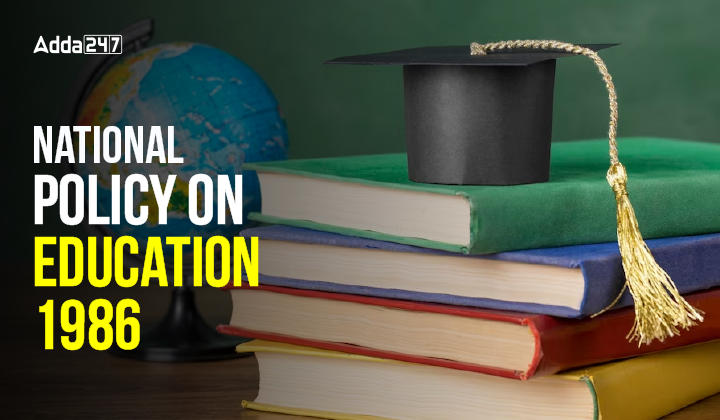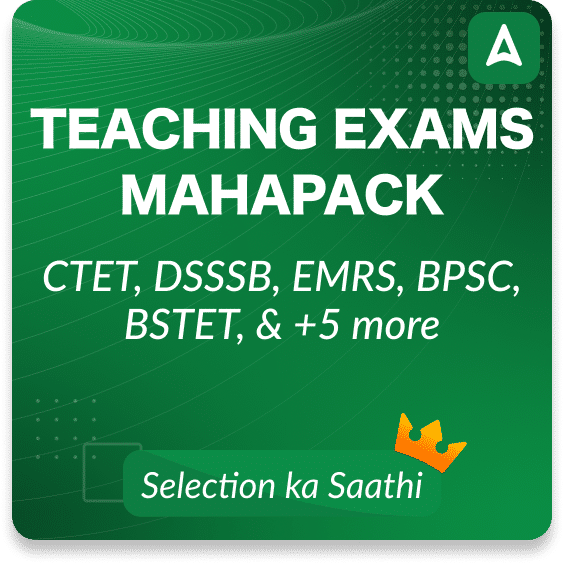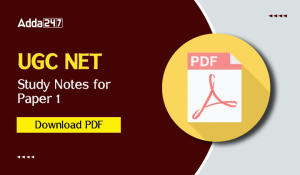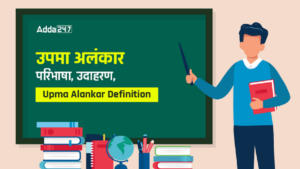Table of Contents
The National Policy on Education 1986 (abbreviated NPE 1986) is responsible for significant changes to the educational system. Education instills moral principles and aids in the growth of society as a whole. People have the opportunity to shape themselves into more responsible members of society. Additionally, educated people are more likely to land well-paying jobs and take part in successful trade and commerce practices.
National Policy on Education 1986
The NPE 1986 had a significant impact on the education system in India and served as a guideline for educational reforms and development over the years. It was revised in 1992 to reflect changing educational needs and challenges. The National Policy on Education (NPE) of 1986 is a significant education policy document in India. It was formulated by the Government of India to provide a comprehensive framework for the development of education in the country. The NPE 1986 aimed to promote and improve the education system and access to education at all levels, from primary to higher education.
| Aspect | Description |
|---|---|
| Goals |
|
| Key Initiatives |
|
| Universalization of Elementary Education | 100% enrollment and completion of elementary education (up to grade 8). |
| Equality of Opportunity |
|
| Improvement in Quality |
|
| Challenges |
|
NPE 1986: Overview
In 1985, the Government of India conducted a thorough examination of the existing education system, culminating in the document “Challenge of Education: A Policy Perspective.” The visionary National Policy on Education, launched by former Prime Minister Rajiv Gandhi in May 1986, aimed to equip India for the challenges of the 21st century.
- 10 + 2 + 3 structure of Education.
- Early childhood care and Education
- Equal opportunity for all.
- Minimum levels of learning for each stage of education.
- Life-long education.
- Education for Equality
- Removal of women’s illiteracy.
- Education of minorities.
- Education of the handicapped.
- Universal enrolment and universal retention of children upto 14 years of age
- Child – Centered Approach
- Pace setting schools for talented children, largely rural.
- Technical and Management Education
NPE 1986 – Highlights
The National Policy on Education (NPE) of 1986, formulated by the Government of India under the leadership of Prime Minister Rajiv Gandhi, encompassed several key highlights and objectives to revamp the education system in the country. Some of the significant highlights of NPE 1986 are as follows:
- Access, Enrolment and Retention of all children upto the age of 14 years in the schools.
- Quality improvement of education by improving the school environment, child cantered and activity-cantered teaching methodology, continuous evaluation throughout the year, removal of all kinds of physical punishment, continuing the
practice of not failing the students in any class at elementary level and arranging the essential facilities in primary schools. - Arranging non-formal education for children, who left the schools, in between, or are residing at places not having schools.
- Setting up of Navodaya Vidyalayas was another landmark in the history of education
- primary schools be opened in remote areas including ashram or residential schools in tribal regions.
- The policy emphasized on inclusion of motor handicapped children in normal schools and arrangement of special schools at district headquarters.
- NPE 1986 proposed a national system of education based on the accepted structure of 10+2+3.
- It suggested that +2 stage be accepted as part of school education throughout the country.
- The Policy had some important features like common school curriculum, minimum levels of learning, value education, role of media and education technology, work experience, emphasis on teaching of Mathematics and Science, Sports and Physical Education and education for international understanding.
- Equal educational opportunities especially for women and reserved communities.
- From expanding scholarships to recruiting more teachers from the reserved categories and incentives for poor families to send their children to school regularly
- It also extended the open university system with the inauguration of Indira Gandhi National Open University in 1985 emphasized adult education
- reorientation of the system to promote gender equality,
- employment of teachers from oppressed groups, and disabled persons
- Development of new schools and universities
NPE and POA
The National Policy on Education (NPE) and the Programme of Action (POA) extensively addressed language development, advocating the use of regional languages as the medium of instruction in universities, and endorsing mother tongue as the medium at the school stage. The revised Programme of Action aimed for educational equality by proposing various measures, including an expanded Operation Blackboard to cover up to the upper primary level, ensuring at least 50 percent female teachers in future elementary level appointments, implementing an informal education program for deprived and working children, providing computer education in numerous schools, and advocating for year-round elementary schools.
NPE 1986 – Aim & Objectives
The National Policy on Education 1986 had a few major recommendations. Based on their aim, the policy had been drafted. Read below to know more about some of those objectives:
- Access to Education – Every student has access to an education of good quality under the idea of a national system of education, regardless of caste, creed, locality, or gender.
- Structure of a Common Education- It envisions a uniform educational system, the 10+2+3 system that is recognised throughout the nation. Regarding the additional break-up of the first ten years, attempts will be made to move to the elementary system, which consists of two years of high school education, five years of primary education, and three years of primary education.
- National Curriculum Framework with a distinctive core – The common core and other adaptable components of a national curricular framework will serve as the foundation for education. The history of India’s freedom struggle, the requirements of the constitution, and other subjects vital to fostering national identity will be part of the common core.
- Education & its Vocationalization – In this new education policy, the rationalization of schooling was given priority. The problem of unemployment should be reduced by taking a variety of vocational courses.
- Educating weaker sections of the society – In the interest of national growth, emphasis has been placed on the education of SC/ST/differently abled people and girls, and their development has been deemed vital.
- Operational Blackboard – The phrase “Operational Blackboard” has been adopted in this new strategy to communicate the idea that the primary schools will only receive the barest necessities. For instance, two rooms, a map, a chart, a blackboard, a carpet, etc.
- Education on Equality of Women – Through residential curricula textbooks, the preparation and orientation of teachers, decision-makers, and administrators, as well as the active participation of the educational investigation – it will promote the creation of new values. Priority will be given to eliminating women’s illiteracy through the provision of particular support services.
NPE 1986 – Important Facts
The study of NPE 1986 revealed some important facts which hold more significance than the rest. They have been mentioned below:
- The objectives of socialism, democracy, and secularism as outlined in the constitution should be promoted through education.
- Education should develop a person’s ability to function at various economic levels.
- Education must foster the promotion of national self-reliance.
- It adheres to the principle that “education is a special investment in the present and future.”
- All students have access to quality education up to a particular level, regardless of caste, creed, location, or sex.
- According to the 1986 Policy’s recommendation for the school system, the government should implement effective measures.
- A common educational framework is what NPE 1986 seeks to develop.
NPE 1986 Three Language Formula
In 1968, the three-language formula was implemented across the country, barring Tamil Nadu that adopted a two-language policy. The NPE 1986 does not make any change in the 1968 policy on the three-language formula and the promotion of Hindi and repeated it verbatim.
- In Hindi-speaking states: English, Hindi, and a modern Indian language.
- Non-Hindi speaking states: English, Hindi, and one Indian language.
NPE 1986 – 12 Components
The NPE 1986 had been broken down into 12 major components. A quick sneak peek of the same has been given here.
- Essence & Role of Education – A framework of 10+2+3 breakdown in all areas
- National Education System – Make education accessible irrespective of class, caste, creed, sex
- Education for Equality – Provide equal possibilities and abolish disparities
- Higher Education – Emphasis on open universities and online learning system as a source of higher studies
- Technical & Management Education – Approval of state technical education boards and the All India Council for Technical Education (AICTE) for technical and managerial education
- Redesigning the Education – Involve culturally relevant content and facts that improve teaching plus learning
- Teachers’ Education – Founding of the District Institute of Education and Training (DIET) for the teacher preparation of educators & improve NCERT teacher training programs
- Management of Education – National level of management and educational planning
- Reorganization of NPE 1986 – Reorganizing the policy at different levels
- Early childhood care & teaching – Under this, nutrition, health, and the social, mental, physical, moral, and emotional development of children will be focused
- Elementary Education – Public enrollment, regular education for children up to the age of 14, and improvement in educational quality.
- Secondary Education – Navodaya Vidyalayas and ‘pace-setting schools’ will be set in various locations
Difference between NPE 1986 and NPE 1992
Here is a comparison of the National Policy on Education (NPE) 1986 and NPE 1992 in a two-column table highlighting some key differences:
| Aspect | NPE 1986 | NPE 1992 |
|---|---|---|
| Universalization of Elementary Education | Aims for universal access to primary education. | Emphasizes universal elementary education as a fundamental right, leading to the passage of the Right to Education Act in 2009. |
| Quality Improvement | Emphasizes improving quality with innovative teaching methods. | Focuses on restructuring and reorienting the education system to improve quality. |
| Vocational Education | Recognizes the importance of vocational education and its integration with general education. | Stresses the need for vocationalization of education to equip students with practical skills. |
| Science and Technology | Acknowledges the promotion of science and technology education. | Emphasizes the role of science and technology in the country’s development. |
| Adult Education | Recognizes the importance of adult education. | Gives special attention to adult education and achieving 100% literacy among adults. |
| Medium of Instruction | Emphasizes mother tongue as the medium of instruction at the primary level. | Continues the emphasis on the mother tongue and encourages the study of regional languages. |
| Teacher Education | Recognizes the need for quality teacher education. | Focuses on improving teacher education and in-service training. |
| Classical Languages and Sanskrit | Emphasizes the preservation and promotion of Sanskrit and classical languages. | Recognizes the importance of Sanskrit and the study of classical languages. |
| Open Universities and Distance Learning | Recognizes the significance of open universities and distance education. | Encourages open and distance learning to expand access to higher education. |
| Nutritional and Health Education | Acknowledges the importance of nutritional and health education for school children. | Stresses the need for nutritional and health education in schools. |




 UGC NET Study Notes for Paper 1, Downloa...
UGC NET Study Notes for Paper 1, Downloa...
 समुद्र का पर्य�...
समुद्र का पर्य�...
 उपमा अलंकार: पर�...
उपमा अलंकार: पर�...














